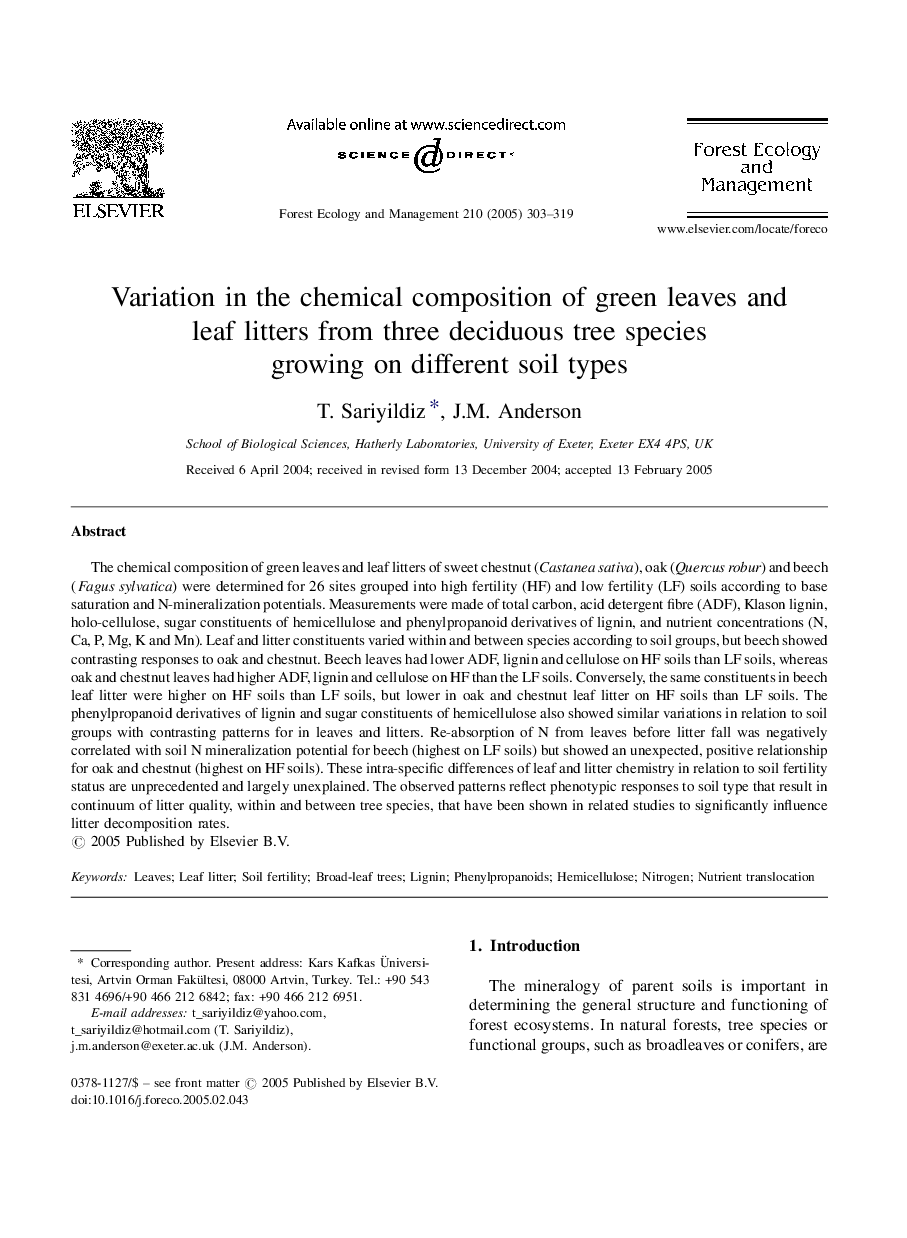| کد مقاله | کد نشریه | سال انتشار | مقاله انگلیسی | نسخه تمام متن |
|---|---|---|---|---|
| 9620372 | 159428 | 2005 | 17 صفحه PDF | دانلود رایگان |
عنوان انگلیسی مقاله ISI
Variation in the chemical composition of green leaves and leaf litters from three deciduous tree species growing on different soil types
دانلود مقاله + سفارش ترجمه
دانلود مقاله ISI انگلیسی
رایگان برای ایرانیان
کلمات کلیدی
موضوعات مرتبط
علوم زیستی و بیوفناوری
علوم کشاورزی و بیولوژیک
بوم شناسی، تکامل، رفتار و سامانه شناسی
پیش نمایش صفحه اول مقاله

چکیده انگلیسی
The chemical composition of green leaves and leaf litters of sweet chestnut (Castanea sativa), oak (Quercus robur) and beech (Fagus sylvatica) were determined for 26 sites grouped into high fertility (HF) and low fertility (LF) soils according to base saturation and N-mineralization potentials. Measurements were made of total carbon, acid detergent fibre (ADF), Klason lignin, holo-cellulose, sugar constituents of hemicellulose and phenylpropanoid derivatives of lignin, and nutrient concentrations (N, Ca, P, Mg, K and Mn). Leaf and litter constituents varied within and between species according to soil groups, but beech showed contrasting responses to oak and chestnut. Beech leaves had lower ADF, lignin and cellulose on HF soils than LF soils, whereas oak and chestnut leaves had higher ADF, lignin and cellulose on HF than the LF soils. Conversely, the same constituents in beech leaf litter were higher on HF soils than LF soils, but lower in oak and chestnut leaf litter on HF soils than LF soils. The phenylpropanoid derivatives of lignin and sugar constituents of hemicellulose also showed similar variations in relation to soil groups with contrasting patterns for in leaves and litters. Re-absorption of N from leaves before litter fall was negatively correlated with soil N mineralization potential for beech (highest on LF soils) but showed an unexpected, positive relationship for oak and chestnut (highest on HF soils). These intra-specific differences of leaf and litter chemistry in relation to soil fertility status are unprecedented and largely unexplained. The observed patterns reflect phenotypic responses to soil type that result in continuum of litter quality, within and between tree species, that have been shown in related studies to significantly influence litter decomposition rates.
ناشر
Database: Elsevier - ScienceDirect (ساینس دایرکت)
Journal: Forest Ecology and Management - Volume 210, Issues 1â3, 16 May 2005, Pages 303-319
Journal: Forest Ecology and Management - Volume 210, Issues 1â3, 16 May 2005, Pages 303-319
نویسندگان
T. Sariyildiz, J.M. Anderson,